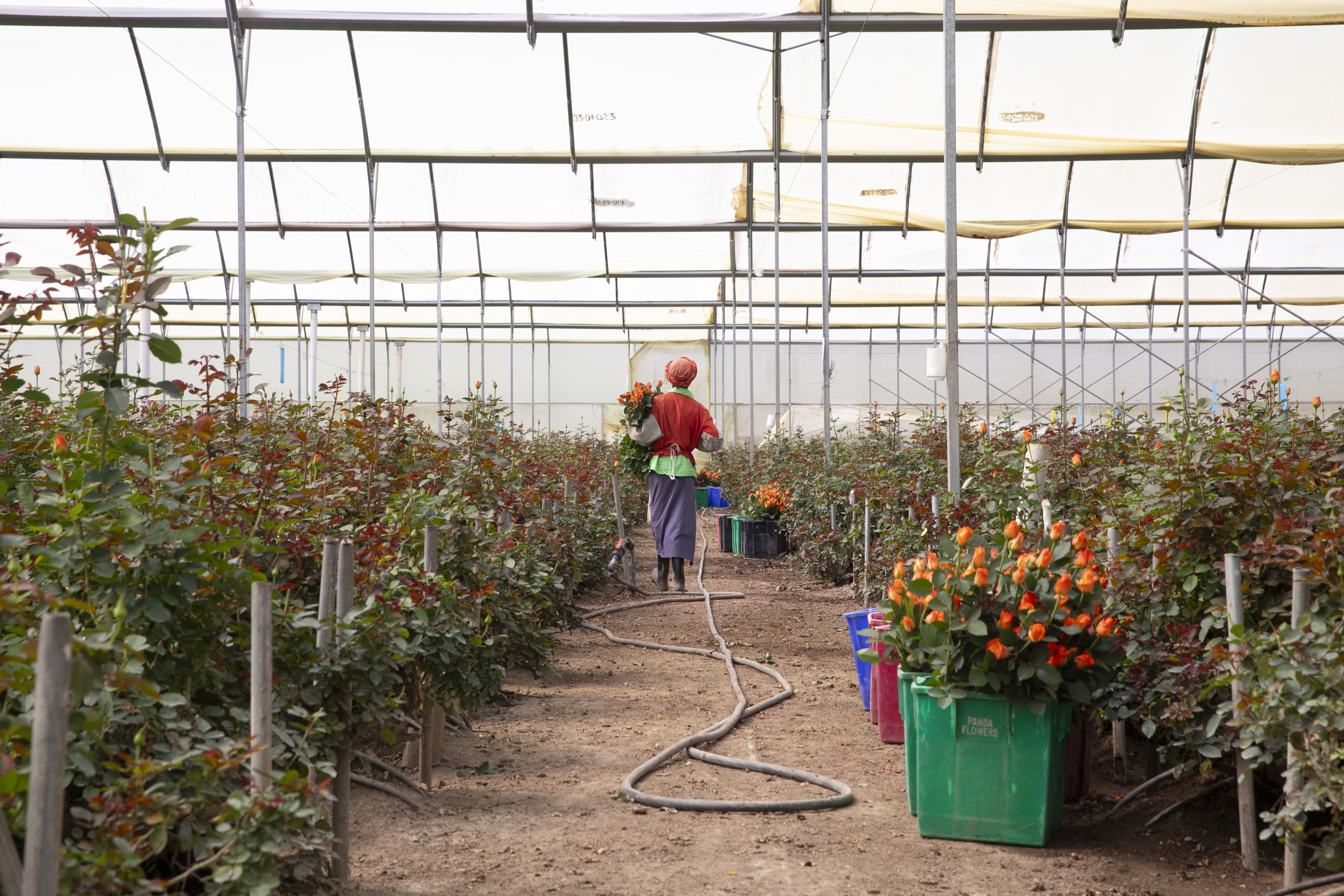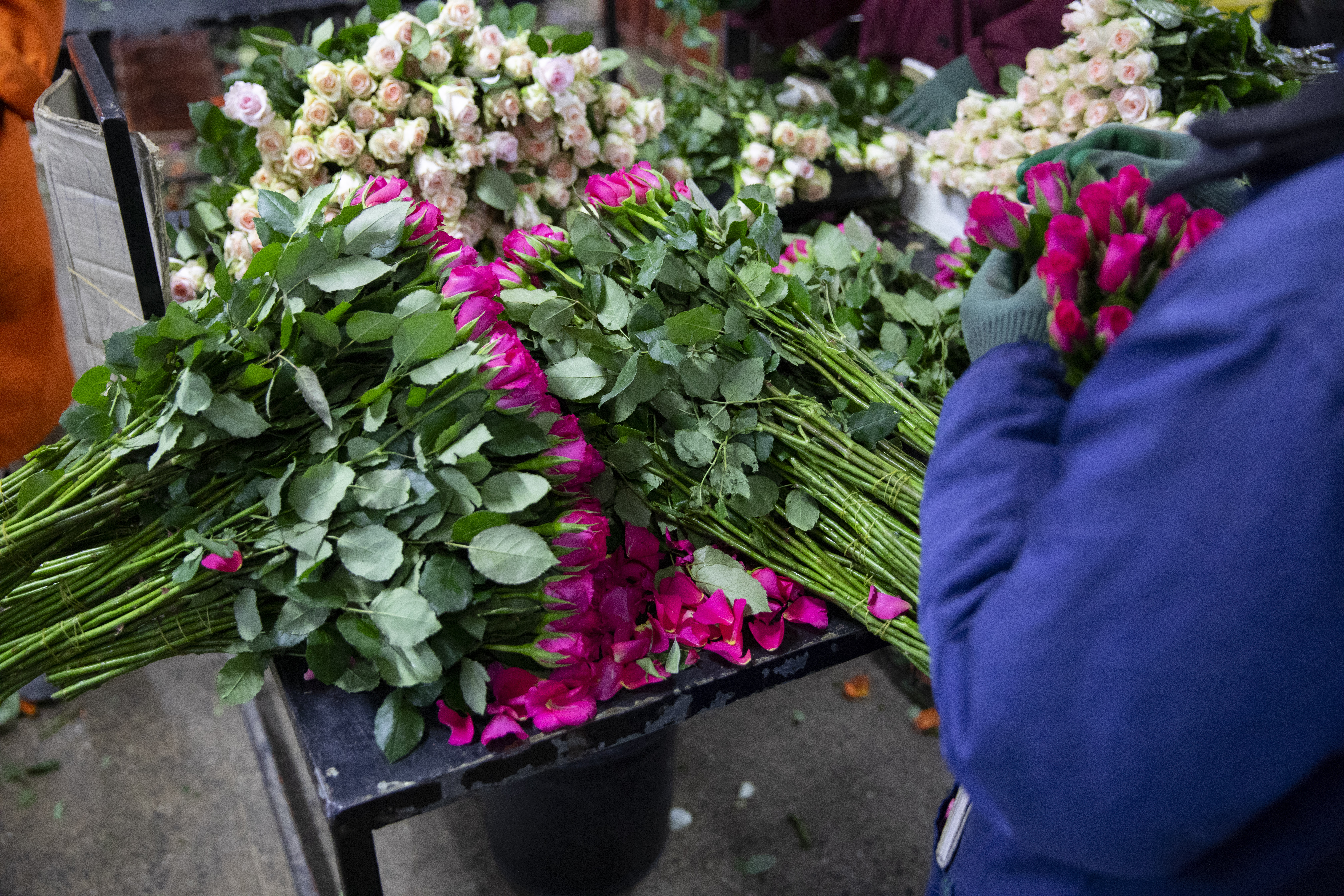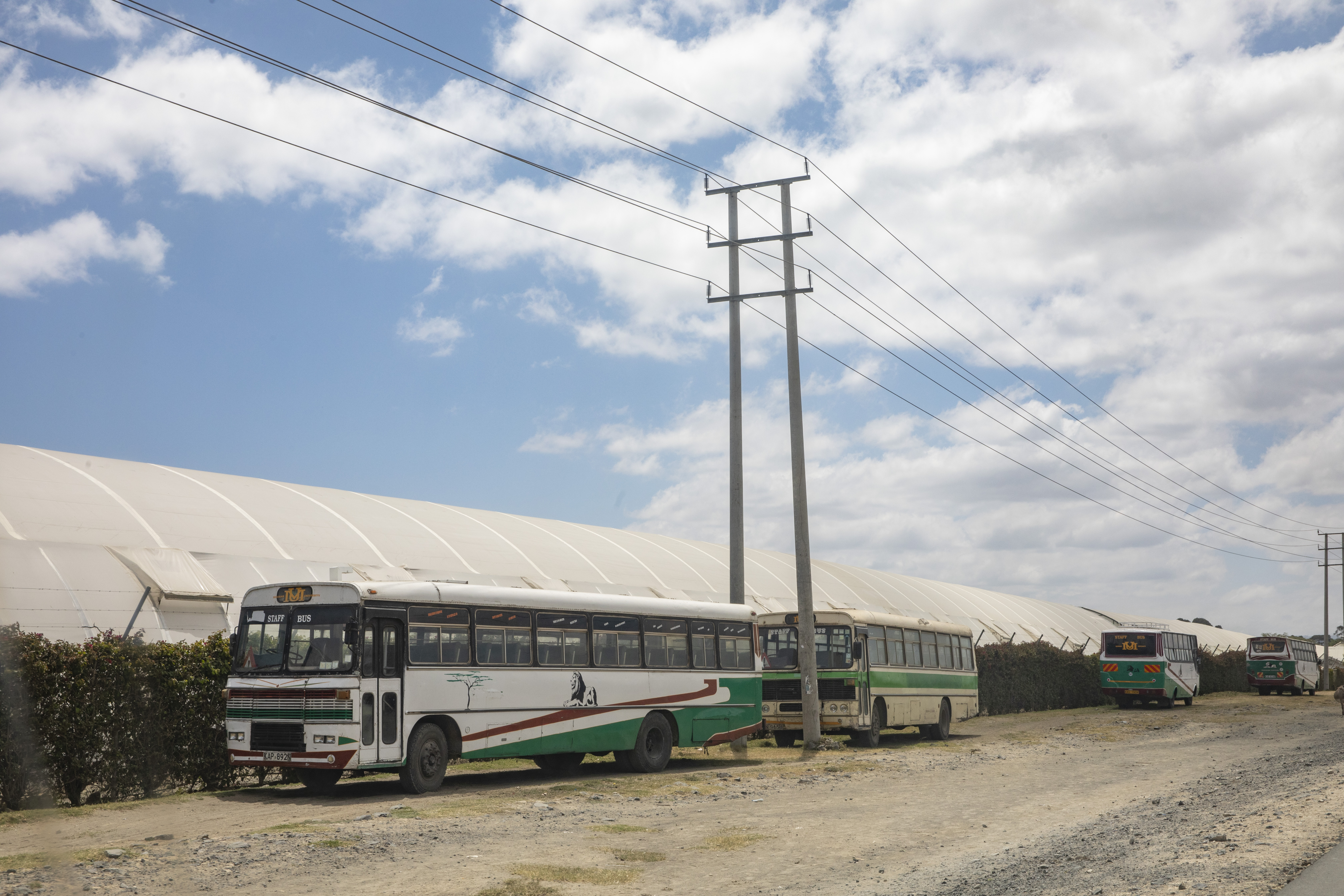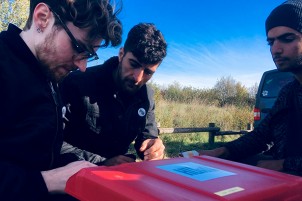She sits in a makeshift, small two-room apartment in one of the town's precarious settlements, where dirty water trickles through the communal alleyways and the electricity supply is inconsistent. She recounts how she struggles to afford simple staples like maize, rice and beans.

Mary (not her real name), a single mother, worked for 14 years as a grader in a pack house, a sprawling factory-style warehouse where cut roses are sorted into bunches according to their length. After waiting in line each sunrise to catch one of the many company buses that take the workers from their homes to the farm, she would sort the flowers from 7:30 am, six days per week. The working day was meant to be 8 hours long; however, she would often be obliged to work an extra three hours a day, for which she would not receive any overtime pay.
The conditions inside the pack house were harsh, Mary says. She describes how the flower company gave her stringent daily targets, which the managers would pressure the workers to meet. "We had to grade 3,700 stems a day," she says.
She felt the target was unrealistic, but says workers like herself had no choice but to deliver, or the farm would sanction them, making her write a statement to her manager explaining the reasons for falling short. "You have to achieve the target for you to sustain your job. Because if you don't achieve it, maybe you can be thrown out," she says.
"The hardest thing about this job is the pay is very low, so you find yourself having a lot of debt," says Mary, who had to take out a loan to help her 23-year-old son attend university.
Mary receives a gross monthly pay of 15,000 Kenyan Shillings (€85), and her basic pay has stayed the same for years. However, Kenya's escalating cost-of-living crisis has worsened, rapidly inflating the prices of necessary commodities such as wheat, rice, maize, and sugar. Mary has little money left at the end of the month. "It's not enough, "she says, "you have to enter into debt to survive."
Mary believes the treatment of flower workers is unjust. "I think it's unfair because they (the flower company) are getting a lot of money, and we are working hard for them."

Workers like Mary are an integral part of the floriculture industry in Kenya, which now supplies 40% of the European cut flower market. Driven by European's love of cheap, fresh-cut flowers, the industry has recently expanded aggressively into Africa, with Kenya at the epicentre of this expansion drive.
Kenya's economy now relies heavily on the industry, which is valued at € 1 billion annually. The sector is also among the country's leading foreign exchange earners. According to the Kenya Flower Council, the industry employs approximately 150,000 individuals and indirectly creates employment for over a million people.
Naivasha is the hub of the Kenyan flower industry. Abundant water resources from Lake Naivasha and a climate ideal for flower cultivation make it possible to grow a wide variety of flowers throughout the year. Additionally, its elevation, 1,884 meters above sea level, decreases the danger of pests and diseases, allowing farmers to cultivate flowers easily. The industry also flourishes in Mt. Kenya and Nakuru, with roses, carnations, and summer flowers being the primary exports.
Female workers account for an estimated 70% of the flower industry's workforce. The sector has been criticised for the widespread mistreatment of workers, including sexual harassment of female employees, as well as a negative impact on water sources and the use of harmful chemicals resulting in disease.
Many of the blooms Mary processes are bound for the Netherlands, the hub of the European cut flowers industry. They arrive daily by plane and are taken to Aalsmeer's huge, frenetic flower market, where they are bought and distributed to suppliers across Europe. Unfortunately, most European consumers, who often buy cheap roses and exotic flowers in supermarkets and florists, remain unaware of their supply chain's human and environmental costs.

In early 2023, Mary fell ill. She felt weak and had a low blood count, which turned out to be a severe condition called low haemoglobin. This caused her tiredness, weakness, and shortness of breath, but it can also lead to heart problems and even death.
She went to the flower farm's own medical facility, where a nurse gave her some medicine and allowed her to rest for a few hours, after which he told her she had to return to work. "I told him, you know, I'm too sick to work," she says. Despite the difficulty in convincing the nurse she was genuinely ill, he eventually agreed to refer her to an off-farm doctor, who administered the necessary medicine to treat her.
Mary's managers allowed her just one day off, even though she was still feeling weak and being treated for a serious illness. "It felt bad because I was still sick, but I had to go back to work," she says. To make matters worse, she had to write a letter to her manager by hand explaining why she couldn't meet her target.
After 14 years of working as a grader in the pack house, Mary was suddenly informed that she would be relocated to the farm where roses are grown inside one of the vast white, temperature-controlled polythene tents that ensure optimal flower growth. According to Mary, these greenhouses can become "too hot", which makes it a "tough" environment to work. She says the work is physically demanding. "When it is too hot, you know you lose a lot of water," she says. And though the farm gives them overalls and shoes, she says, they are not of good quality, which means her feet are full of blisters.
According to Mary, the tasks involved in working on the flower farm are potentially risky in other ways, too. She worries about the unfamiliar chemicals she was asked to use to spray the roses, especially since the chemicals remain inside the greenhouse tents. Scientists in Kenya have warned of potential dangers associated with using fertilisers, insecticides, and preservatives inside greenhouses, which they claim could expose workers to harmful toxins. Such chemicals are said to have been linked to diseases.
Mary is afraid to speak out about her worries, however. As a single woman supporting her son in a country where unemployment is high, Mary is intensely apprehensive about losing her job. "You have that fear," she says. Despite feeling exhausted from the conditions she works under, she is compelled to continue working in Naivasha's burgeoning flower industry because she believes she has no other viable options. If she felt she had a choice, there is no doubt in her mind what she would do. "I don't want to continue because this work is so tiresome," she says, "If God helps me, I will move on."
Mary's name has been changed to protect her identity.
This investigation was conducted between Kenya and the Netherlands with support from Journalismfund Europe's Investigation Grant for Environmental Journalism.



